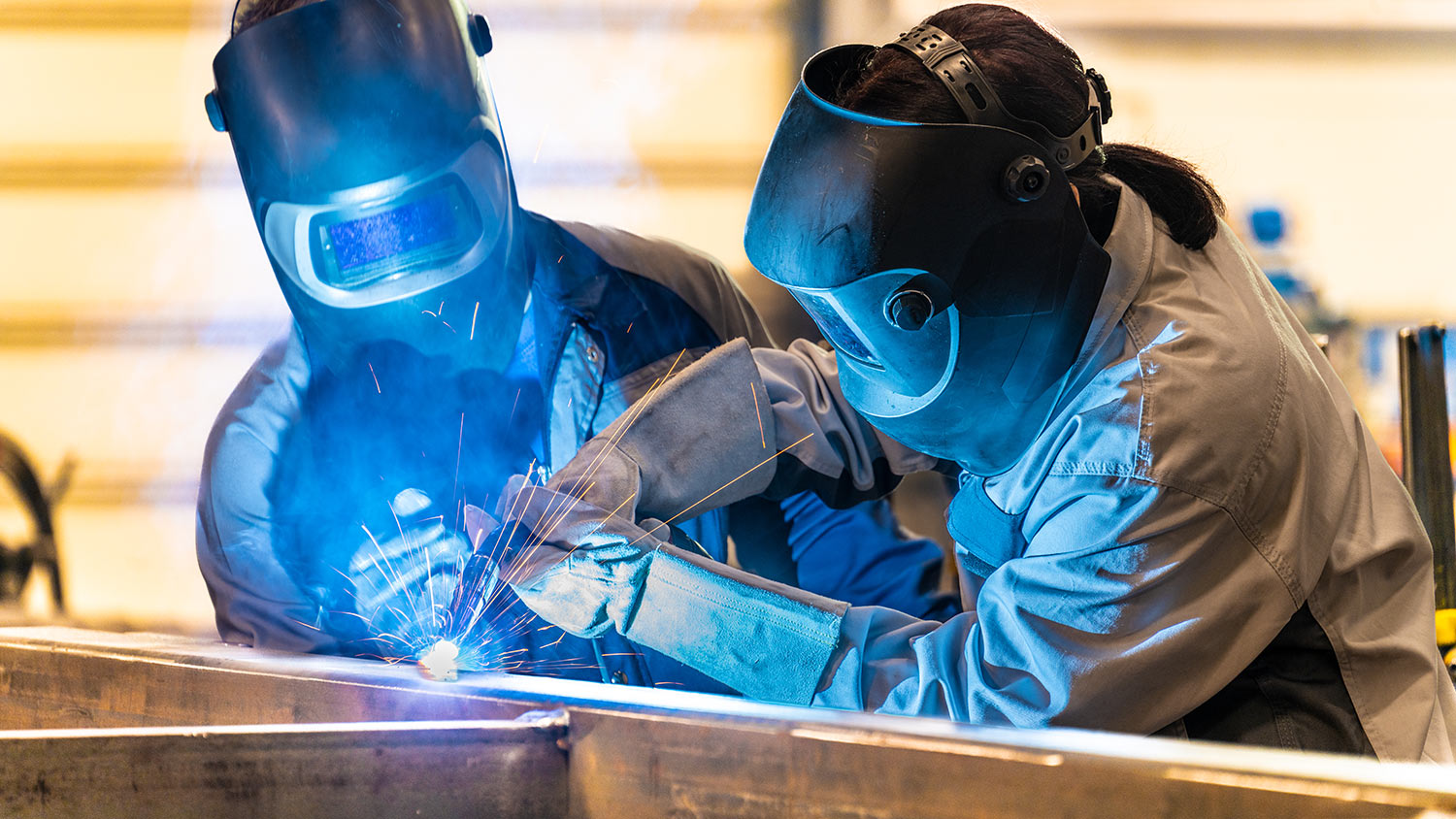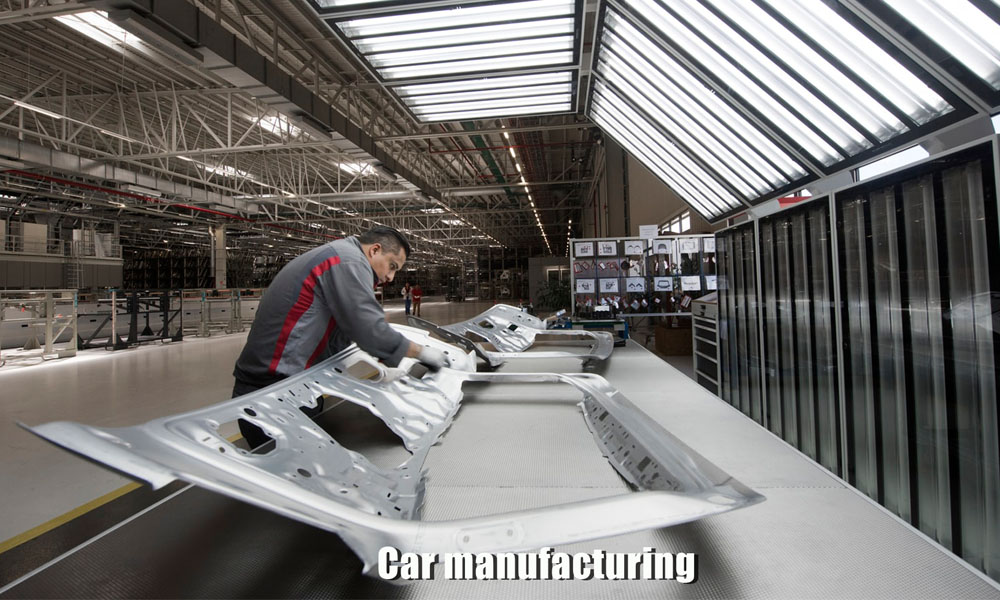A quick guide about overheating prevention from Montana Mobile Welding and Repair
Wiki Article
Typical Welding Repair Service Issues and How to Address Them Successfully
Welding repair services commonly come across a variety of issues that can jeopardize the stability of the final item. Common troubles consist of inadequate infiltration, porosity, and imbalance, to name a few. Each issue presents one-of-a-kind difficulties that require details techniques for resolution. Recognizing these concerns is crucial for welders aiming to improve their abilities and outcomes. This conversation will explore these common welding repair service concerns and effective approaches to address them.Inadequate Penetration
Poor infiltration takes place when the weld steel fails to completely fuse with the base material, leading to weak joints and potential structural failures. This issue often comes from inadequate heat input, inaccurate electrode angle, or inappropriate welding speed. Welders may encounter insufficient penetration because of a mistake of the necessary specifications for a specific product density or kind. In addition, contamination on the base material's surface can impede effective bonding, exacerbating the issue. To address inadequate infiltration, welders need to guarantee proper settings on their tools and preserve a clean job surface. Routine assessment of welds is suggested to determine any kind of deficiencies early, permitting for prompt adjustments and the prevention of jeopardized structural integrity in welded settings up.Porosity
Porosity is a common defect in welded joints that shows up as small gas bubbles caught within the weld metal. This flaw can compromise the integrity of the weld, causing reduced stamina and prospective failure under stress and anxiety. Montana Mobile Welding and Repair Fabrication. Porosity commonly occurs from contamination, dampness, or inappropriate welding methods, which permit gases to leave into the liquified weld swimming pool. To deal with porosity, welders need to ensure appropriate surface area preparation, keep a tidy functioning setting, and utilize ideal welding specifications. Additionally, selecting the appropriate filler material and shielding gas can minimize gas entrapment. Regular assessment and testing of welds can assist determine porosity early, guaranteeing timely rehabilitative actions are taken, thereby maintaining the high quality and integrity of the bonded frameworkImbalance
Imbalance in welding can emerge from numerous factors, including incorrect arrangement and thermal development. Recognizing the root causes is crucial for effective resolution. Numerous correction techniques are available to straighten parts and guarantee structural stability.Sources of Imbalance
Welding imbalance usually originates from a range of underlying problems that can jeopardize architectural stability. One key reason is incorrect fit-up of components prior to welding, which can result in gaps and unequal surface areas. Variants in thermal expansion throughout the welding procedure can additionally cause distortion, specifically if the materials being joined have various coefficients of expansion. Additionally, inadequate clamping and fixturing might stop working to hold parts securely in place, leading to motion throughout welding. Improperly kept devices, consisting of welding devices and devices, might introduce inconsistencies in the weld grain, further contributing to imbalance. Lastly, operator mistake, coming from not enough training or experience, can also play a substantial function in producing misaligned welds.Adjustment Strategies Offered
Addressing misalignment effectively needs a combination of corrective methods customized to the certain issues available. One typical technique is making use of jigs or fixtures to hold parts in the appropriate placement during welding, guaranteeing consistent placement. Furthermore, preheating the materials can assist lower distortion and improve fit-up. For substantial misalignment, mechanical realignment techniques, such as using hydraulic jacks or clamps, can be utilized to deal with the placement prior to welding. Post-weld warmth therapy might likewise be necessary to eliminate tensions brought on by imbalance. Finally, careful inspection and modification throughout the configuration phase can prevent misalignment problems from becoming significant troubles, promoting a smoother welding process and enhancing general architectural honesty.Distortion
Distortion is an usual challenge in welding that can develop from different aspects, consisting of uneven cooling and heating. Understanding the root causes of distortion is important for applying efficient prevention strategies. Resolving this issue not just enhances architectural integrity however also improves the overall quality of the weld.Reasons of Distortion
When based on the intense warm of welding, products often undertake modifications that can bring about distortion. This sensation mostly arises from thermal development and contraction during the welding process. As the get more weld location heats up, the material broadens; upon air conditioning, it acquires, which can develop interior stresses. On top of that, irregular home heating throughout a work surface can worsen these stress and anxieties, resulting in bending or flexing. The kind of material likewise plays a substantial function; steels with varying thermal conductivity and coefficients of expansion may react in different ways, leading to unforeseeable distortions. In addition, poor joint style and inadequate fixturing can add to imbalance throughout welding, raising the chance of distortion. Comprehending these causes is crucial for efficient welding repair work and prevention strategies.Avoidance Techniques
Efficient avoidance methods for distortion throughout welding focus on regulating warm input and ensuring correct joint style. Maintaining a consistent heat input assists to reduce thermal growth and contraction, which can bring about distortion. Using strategies such as pre-heating the workpiece can additionally minimize the temperature level slope, advertising consistent heating. Furthermore, picking appropriate joint designs, such as T-joints or lap joints, can improve stability and reduce stress concentrations. Carrying out correct fixturing to secure the workpieces in area better aids in preserving positioning throughout the welding procedure. Lastly, staggered welding series can distribute heat more evenly, protecting against local distortion. By using these strategies, welders can greatly reduce the probability of distortion and improve the overall high quality of their welds.Cracking
Fracturing is an usual concern come across in welding fixings, commonly resulting from various elements such as inappropriate cooling rates, material option, or insufficient joint prep work. The event of fractures can considerably endanger the stability of the weld, bring about possible failures during operation. To address this problem, welders need to first evaluate the source, guaranteeing that materials work and properly chosen for the certain application. In addition, regulating the air conditioning price during the welding procedure is vital; rapid cooling can cause stress and bring about fracturing. Proper joint layout and prep work likewise contribute to reducing the risk. Applying these methods can boost weld quality and sturdiness, inevitably minimizing the likelihood of breaking in ended up weldments.
Incomplete Fusion
A substantial concern in welding repairs is incomplete combination, which occurs when the weld metal does not sufficiently bond with the base product or previous weld passes - Montana Mobile Welding and Repair Welding. This defect can cause weaknesses in the joint, possibly compromising the stability of the bonded structure. Elements adding to insufficient fusion consist of inadequate warmth input, incorrect welding method, and contamination of the surfaces being signed up with. To address Discover More this problem successfully, welders ought to guarantee proper pre-weld cleansing and surface preparation, along with adjust their welding specifications to accomplish sufficient infiltration and fusion. Regular examination throughout the welding process can additionally help recognize insufficient combination early, enabling timely corrective steps to boost the overall quality of the weldOverheating
While welding repairs can enhance structural stability, overheating offers a significant obstacle that can bring about material degradation. Too much heat throughout welding can alter the mechanical residential or commercial properties of metals, leading to decreased toughness, enhanced brittleness, and warping. This phenomenon is especially essential in high-stress applications where structural reliability is vital. Identifying overheating can entail visual assessments for staining or distortion, along with checking temperature level during the welding procedure. To reduce the dangers related to getting too hot, welders should utilize proper techniques, such as regulating warmth input, changing traveling speed, and utilizing suitable filler products. In addition, carrying out pre- and post-weld warm treatments can help recover product residential properties and boost the total top quality of the repair work, ensuring long-lasting efficiency and safety.Regularly Asked Inquiries
What Are the Typical Indications of a Welding Problem?

How Can I Evaluate My Welds for High quality?
To evaluate welds for top quality, one can use aesthetic inspections, ultrasonic testing, and radiographic techniques. Each strategy ensures architectural stability, determines flaws, and confirms adherence to defined criteria, inevitably enhancing the dependability of the bonded joints.What Security Preventative Measures Should I Take While Welding?
When welding, one must prioritize security by using proper individual safety tools, making certain proper ventilation, securing combustible materials away, keeping a clean workspace, and recognizing surroundings to stop mishaps and injuries.Can I Repair a Weld Without Remodeling the Entire Joint?
Fixing a weld without renovating the whole joint is feasible, depending upon the damages (Belgrade Fabrication). Techniques such as grinding, adding filler material, or making use of a welding process can successfully address details problems while preserving the surrounding frameworkWhat Devices Are Important for Efficient Welding Repairs?
Vital devices for effective welding repair services include a welding machine, wire brush, grinder, safety gear, clamps, and filler materials. Each tool plays an important duty in making sure high quality and safety and security throughout the repair service process. Porosity generally emerges from contamination, wetness, or incorrect welding techniques, which enable gases to get away right into the liquified weld swimming pool. Inadequately conserved devices, including welding devices and devices, may present variances in the weld grain, more adding to misalignment. When subjected to the intense warm of welding, materials usually go through modifications that can lead to distortion. Splitting is a typical issue come across in welding repair services, usually resulting from various aspects such as incorrect cooling rates, product selection, or insufficient joint prep work. A considerable problem in welding repair work is insufficient fusion, which takes place when the weld steel does not adequately bond with the base material or previous weld passes.Report this wiki page